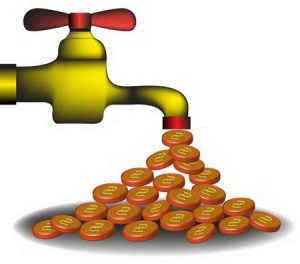by virtualworks | Oct 5, 2025 | Accomplishments, Business, business growth, KPI, Mastery, Outsourcing, ROWE, Value Based Fees, Virtual Assistant, working from home, working remotely
 In our ongoing exploration of the Results-Only Work Environment (ROWE), we’ve delved into the key components, implementation strategies, and success stories of this innovative approach to workplace management. An essential aspect of embracing ROWE is assessing its impact on the workforce by identifying key performance indicators (KPIs), collecting and analyzing data on employee satisfaction and productivity, and making adjustments to ROWE strategies based on the results.
In our ongoing exploration of the Results-Only Work Environment (ROWE), we’ve delved into the key components, implementation strategies, and success stories of this innovative approach to workplace management. An essential aspect of embracing ROWE is assessing its impact on the workforce by identifying key performance indicators (KPIs), collecting and analyzing data on employee satisfaction and productivity, and making adjustments to ROWE strategies based on the results.
Identifying Key Performance Indicators (KPIs)
To measure the success of ROWE within an organization, it’s crucial to determine relevant KPIs that align with the company’s goals and objectives. These indicators should focus on areas such as:
- Employee satisfaction: Assess factors like job satisfaction, work-life balance, and employee engagement to gauge the overall happiness and well-being of the workforce. This could include measuring satisfaction levels with various aspects of ROWE, such as autonomy, flexibility, and communication.
- Productivity: Evaluate employee performance and output in relation to their goals and expectations. Metrics could include quality and quantity of work, goal achievement rates, project completion timelines, and overall contributions to the organization’s success.
- Retention and turnover: Examine employee retention rates and turnover patterns to understand the impact of ROWE on employee loyalty, commitment, and satisfaction. Analyzing these metrics can provide insights into how well ROWE supports employees’ long-term success within the organization.
Collecting and Analyzing Data on Employee Satisfaction and Productivity
Gathering and interpreting data is crucial to understanding the impact of ROWE on employee satisfaction and productivity. Several methods for data collection include:
- Employee surveys: Regularly administer anonymous surveys to gather feedback on employee experiences and perceptions related to ROWE. Analyze the results to identify trends, strengths, and areas for improvement. Be sure to ask specific questions about ROWE elements, such as how well employees are adapting to the new approach, what challenges they face, and what aspects they find most beneficial.
- Performance reviews: Utilize performance reviews to assess employees’ productivity and goal achievement within the ROWE framework. This process may involve self-evaluations, peer feedback, and manager assessments. Take the opportunity to discuss ROWE-specific elements in these reviews, such as how well employees are managing their time and whether they feel they have the resources they need to succeed.
- Focus groups and interviews: Facilitate discussions with employees to gain a deeper understanding of their experiences and perspectives on ROWE. Use these insights to inform your evaluation and decision-making process. This qualitative data can help provide a nuanced understanding of how ROWE is affecting the workforce and where improvements may be needed.
Adjusting ROWE Strategies Based on Results
Once you’ve collected and analyzed data on employee satisfaction and productivity, leverage the insights to refine and adjust your ROWE strategies. Consider the following approaches:
- Addressing areas for improvement: Pinpoint common challenges or concerns raised by employees and develop targeted interventions to address them. This may involve refining policies, providing additional training or resources, or adjusting performance expectations. Involve employees in this process to ensure their perspectives and needs are taken into account.
- Building on strengths: Capitalize on areas where ROWE has proven successful by expanding related initiatives or incorporating them into other aspects of the organization. This could involve extending flexible work policies to additional departments, expanding training opportunities, or sharing success stories to inspire others.
- Continuous monitoring and evaluation: Regularly assess the impact of ROWE and make adjustments as needed to ensure its ongoing success and effectiveness. This iterative process can help you refine your approach and respond to changes in your organization or the broader work environment. Continuously gathering feedback and adapting your strategies will demonstrate your commitment to making ROWE a long-term success for your organization.
In conclusion, evaluating the impact of ROWE is essential for understanding its effectiveness and making data-driven decisions about its implementation. By identifying relevant KPIs, collecting and analyzing data on employee satisfaction and productivity, and adjusting ROWE strategies based on the results, organizations can create a thriving work environment that supports both employee well-being and organizational success.
by virtualworks | Jan 30, 2023 | Business, business growth, Marketing, Mastery, Team Work, Time Management, Value Based Fees
 When an organization needs to write a proposal, it can be for many different reasons, such as business proposals, project proposals, proposals for research funding or non-profit organization funding, each of which require a particular focus. Today I’ll focus on writing proposals in response to a solicited request, like contract work.
When an organization needs to write a proposal, it can be for many different reasons, such as business proposals, project proposals, proposals for research funding or non-profit organization funding, each of which require a particular focus. Today I’ll focus on writing proposals in response to a solicited request, like contract work.
All organizations need revenue, whether they are non-profits, associations or business enterprises. While it’s great to have repeat clients and members, there are times where organizations have to get out there and look for that work by other means and one method is by responding to a Tender, Request for Quotation, Request for Services, Request for Proposal, etc.
At times when an organization is provided with one of these Request documents, it can be met with some shock as to the amount of information being requested for a simple piece of work. Why so much detail? In short, some of the Requests may be from clients that use public funds and are accountable for how those funds are spent or the client is simply seeking good value for money and are looking for evidence from organizations that their potential contractor is capable of providing the services in a manner that is of good quality and is cost effective.
So, what makes a good proposal?
Like any consumer, the client is looking for good value for the money they plan on spending. By responding to what they are looking for, or solving their problem, stated in the request in a clear manner, a well written proposal can give you the edge on the competition.
There are many areas on the internet to find information on how to prepare a proposal. For example, if you are considering preparing a proposal for the Government of Canada, you may want to check out their site at buyandsell.gc.ca on Preparing Proposals.
Let’s take a look at some of the Do’s in proposal writing:
- Do read the request thoroughly to understand what the client is looking for. You need to understand where the client is coming from in their current state, their needs, and possible opportunities to provide a solution to their problem.
- Do ensure the goods or services are something your organization provides. If you are looking at a Request that is asking for something you may not provide, you may have to look at sub-contracting a portion of that work (if allowable), or it may not be worth your time to respond.
- Do ask questions where something is not clear, or you need information to help you prepare your proposal. These questions are helpful to the organization submitting a proposal and it may tell the client where they need to make the request clearer for all.
- Do watch out for question deadlines and submission deadlines – Proposals received after deadlines are usually not allowed.
- Do really take a look at the criteria in the Request. In most cases it is the criteria what your proposal will be reviewed against, so make sure to answer all parts of each criteria listed in the Request document.
- Do plan ahead to make sure there is enough time not only to write the proposal, but research the Client, understand the resources you have available, and have the proposal reviewed a few other people in your organization to make sure the submission is aligned with the Request. Another pair of eyes is always good!
The obvious Don’ts are those actions contrary to the Do’s above and:
- Don’t have the client search on external links for supporting material, especially if the request states that all supporting material must be in the proposal. In many cases, information from external sources can’t be taken into consideration and proposals are reviewed as they are provided, with no opportunity to add more in later. NB: some exceptions may be allowable, but they will probably be stated in the Request document, if they are.
- Don’t put it on your references to fill in the blanks of what should be in your proposal. If there is a request to provide references these are most likely only to verify what was stated in your proposal.
While it was mentioned above that Requests are received from clients, there are also many sites where organizations can search for potential Request documents to provide a proposal to such as MERX, Biddingo. Also check your city’s municipal, university, hospital or non-profit websites.
Best of luck in your proposal writing endeavors!
by virtualworks | May 9, 2022 | Business, Case Study, Marketing, Mastery, Outsourcing, Value Based Fees

Did you hear the one about the customer and the plumber? This is a classic anecdote that applies to more and more industries and professions as we realize that providing services is not about trading time for money.
Customer: “Hello, I have a problem with my bathroom plumbing and I need you to come over.”
Plumber: “What seems to be the problem?”
Customer: “Well, when I flush the toilet, the kitchen faucet drips.”
Plumber: “I’ll be over this afternoon to have a look.”
The plumber arrives, inspects the plumbing in the house, checks out a few things, flips a few switches, tests the system and fixed the problem in about 15 minutes. He presents the customer with the bill.
Customer: “$600 to do 15 minutes work?!?!”
Plumber: “It took me 10 years to learn how to do that.”
There’s more to services than just trading time for money. What about all the years it took to get your education, training and credentials? What about your life experience? The time and effort it took you to build your organization? You’re worth so much more than dollars per hour. Think about it and share your comments.
 In our ongoing exploration of the Results-Only Work Environment (ROWE), we’ve delved into the key components, implementation strategies, and success stories of this innovative approach to workplace management. An essential aspect of embracing ROWE is assessing its impact on the workforce by identifying key performance indicators (KPIs), collecting and analyzing data on employee satisfaction and productivity, and making adjustments to ROWE strategies based on the results.
In our ongoing exploration of the Results-Only Work Environment (ROWE), we’ve delved into the key components, implementation strategies, and success stories of this innovative approach to workplace management. An essential aspect of embracing ROWE is assessing its impact on the workforce by identifying key performance indicators (KPIs), collecting and analyzing data on employee satisfaction and productivity, and making adjustments to ROWE strategies based on the results.


Recent Comments